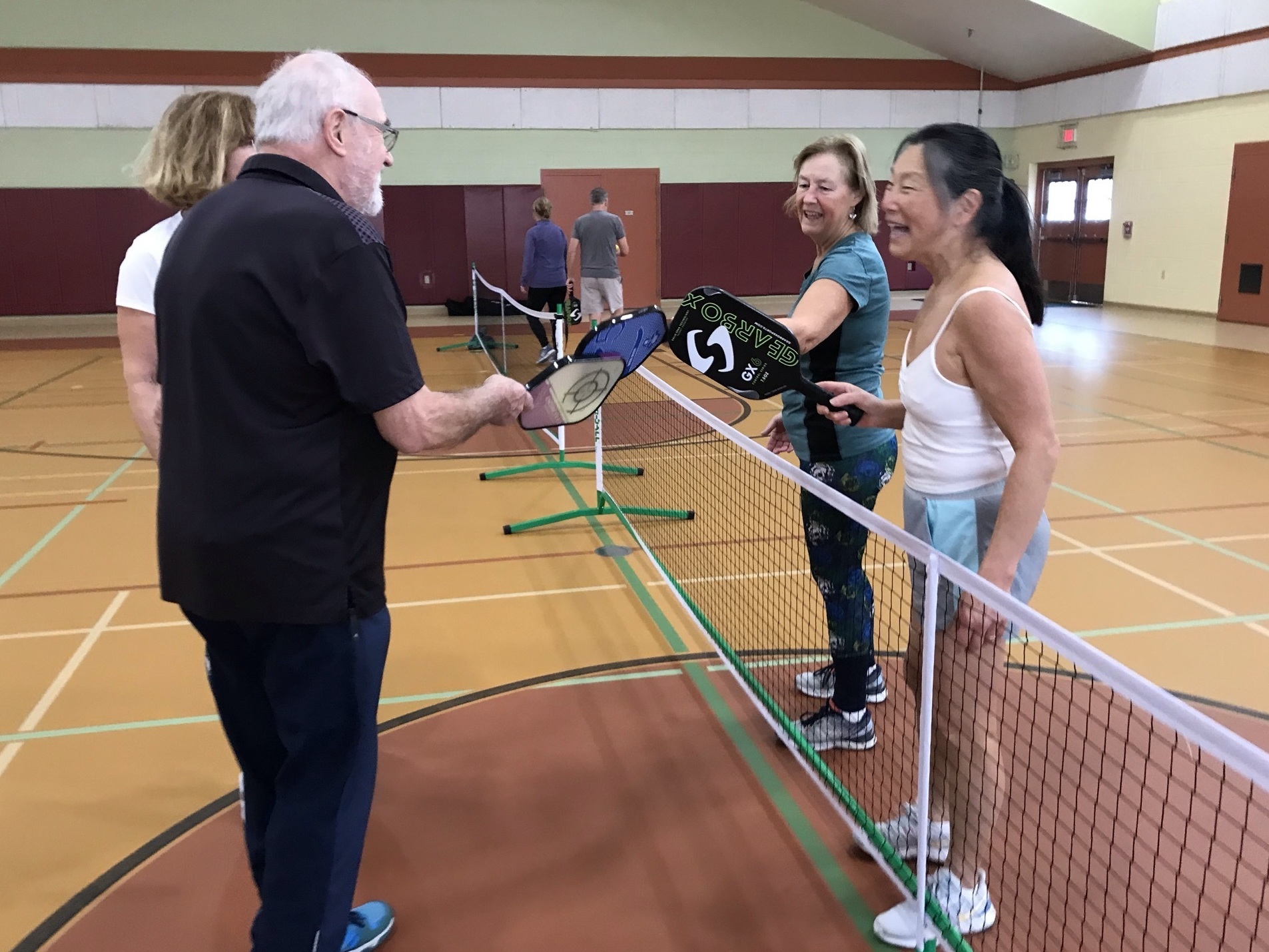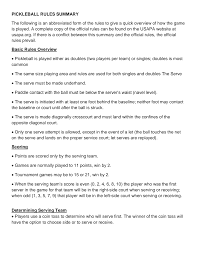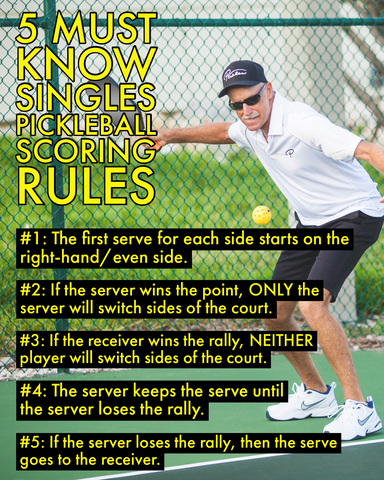
Pickleball makes a great team sport. Pickleball can also be a great way for you to meet new people. You must first understand the pickleball rules before you can start playing. First, pickleball courts can be smaller than tennis courts. Therefore, it is important that you wear court-friendly shoes. Renting equipment from a local pickleball group is another option.
The aim of a pickleball service is to bring the ball into play. It should be hit using an underhand stroke and contact below your waist. It should bounce on the opposite side of the opposing team’s service court. This serves to place the opponent on the defensive and make it harder to aggressively hit shots.
Before you start, make sure to warm up. You can begin by running for five or walking the court slowly. Focus on developing an athletic posture during this time. You should also ensure that your head, shoulders and wrist are straight.

You will need to be on the court's edge when it is your turn to serve. Position yourself to the right or left of the centerline. Your partner's service court will be your left. If the opposition team is building momentum, chances are you'll get a deeper shot. You can pivot your hips to prevent hitting the net.
If a serve in pickleball goes beyond the opposing sideline, it is considered a fault. Equally, a serve which lands in the kitchen/net is considered a mistake.
You'll need to find a court for pickleball before you can begin. Most pickleball courts can found in parks and rec centers. They measure 20 feet in width and 44 feet in length. It is recommended that you bring a tennis shoe and a paddle. A few pickleball courts can host four players. But, it's best to ask the manager about any limitations.
Pickleball is like most other sports. You should always have a partner to play with. If you're not playing you can still volley but you will be breaking the double bounce rule by running up to the kitchen to get the ball.

It is also important to learn how you can play a doink. The game's most important component is the dink. This is a defensive shot you can take to force your opponent to volley back the ball. Typically, you'll stand behind your opponent's baseline to hit the ball.
If you are called for a serving call, be polite and open about it. Don't make fun of your opponent's mistake. Instead, give them the benefit-of-the doubt.
Last, remember that you cannot cross over the centerline when serving. Depending on the type of court you play on, you'll probably have to wait until the end of the point before you can volley.
FAQ
What Does Exercise Do for Your Body?
Exercising helps you lose weight, build muscle mass, increase energy levels, reduce stress, and improve sleep quality. Exercise is good for your mood, self-esteem, productivity, and heart health.
Does exercise cause me to lose weight?
Yes. Yes. Regular exercise can help you lose weight and burn extra calories. Exercise also helps keep your metabolism up, so you continue to burn calories even when you aren't exercising.
What are Cardio Exercises?
Cardiovascular activities are any exercise that makes your heart work harder than normal. You can do this by running, swimming, biking, rowing and bicycling. These activities burn fat and raise your metabolism. They also strengthen your heart and lungs, which makes them great ways to stay fit.
Statistics
- Adolescent girls were less active than adolescent boys, with 85% vs. 78% not meeting WHO recommendations of at least 60 minutes of moderate to vigorous intensity physical activity per day. (who.int)
- In high-income countries, 26% of men and 35% of women were insufficiently physically active, as compared to 12% of men and 24% of women in low-income countries. (who.int)
- Physical activity confers the following maternal and fetal health benefits: a decreased risk of pre-eclampsia, gestational hypertension, gestational diabetes (for example, 30% reduction in risk) (who.int)
- One study showed that adults who watch more than 4 hours of television daily had an 80% higher risk of death from cardiovascular disease. (heart.org)
External Links
How To
How to Burn Belly Fats Quicker
Belly Fat is usually seen as a problem when we want to lose weight. However, Belly Fat can be beneficial if you really think about it. Your organs are protected from being damaged by excess belly fat. Let's now see how to quickly lose belly fat.
The main factors that lead to body fat storage are stress and lack exercise. Because stress stimulates the release of cortisol hormone, it makes us hungry all the time. Cortisol raises insulin levels. The insulin stores the excess calories as fat. Lack of sleep causes the release of adrenaline into our system, leading to increased appetite. These extra calories can also be reduced by exercise
There are many ways you can reduce belly fat. You can choose to try any of these options, depending on your budget. These are some ways to quickly lose belly fat.
-
Eat less food. Instead of eating three large meals per day, try to eat smaller meals. This way, you'll consume fewer calories overall.
-
Make sure you drink plenty of water. Water flushes out toxins, and keeps your body hydrated. Drinking water before meals will help you feel fuller for longer, so you don't overeat.
-
Avoid unhealthy snacks. If you're looking for quick fixes, snack foods like chips, cookies, candies, etc. These tempting snacks might look appealing. But avoid these fattening treats as they contain lots of empty calories and too much sugar. Instead, opt for healthy alternatives such as fruits, vegetables and whole grains.
-
Three times per week, strength training is recommended. Strength training builds muscle mass which burns more calories even while resting. It also strengthens bones, muscles, ligaments, tendons, the heart, lungs, and joints.
-
Walk or stretch regularly. Stretching improves flexibility and mobility which can reduce back pain. Walking is great for burning calories, especially brisk walking for 30 minutes.
-
Reduce alcohol intake. Alcohol adds empty calories to your diet and has no nutritional value whatsoever.
-
Reduce your weight gradually. The first step towards losing weight is to identify what your current weight is. Then calculate your ideal weight by adding 5% to 10% of your total body weight. Once you have calculated your target body weight, you can begin to cut calories by 500-1000 calories every day until your goal is reached.
-
Avoid processed foods. These foods are high on sugar, salt, and additives. While processed foods can be convenient, they don't offer enough nutrients to ensure your health.
-
Don't skip breakfast! Breakfast is good for your concentration, memory, and energy. Breakfast should include protein (like eggs), fiber (like oats), and complex carbohydrates (like oatmeal).
-
Have regular bowel movements. Constipation or irregularity can lead to gas and bloating. You can prevent this by drinking lots of water and increasing your fiber intake.